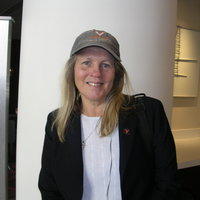Perplexity on K.S. and AIDS and inflammation
Discuss the issue of K.S. happening despite ART use
Kaposi sarcoma (KS) can and does occur in people living with HIV, even when they are on effective antiretroviral therapy (ART). While ART has dramatically reduced the incidence and severity of KS, several important points explain why KS still happens despite ART use:
Immune Reconstitution Inflammatory Syndrome (IRIS): Some individuals develop KS or see it worsen shortly after starting ART, in what is known as KS-IRIS. This is thought to be due to immune system recovery leading to a paradoxical inflammatory response, which can unmask or exacerbate KS—even when HIV viral load drops and CD4 counts begin to rise. Rapidly disseminated or aggressive KS has been reported in these cases, sometimes within months of starting ART.
Persistent Risk Despite Good Immune Recovery: Studies have documented cases of KS in patients who maintain undetectable HIV viral loads and normal CD4 counts for years. This includes long-term HIV survivors and older adults, suggesting additional risk factors like longstanding HIV infection, human herpesvirus 8 (HHV-8) co-infection, or immune aging may play a role.
Incomplete Immune Restoration: Some people, particularly those who start ART late (with very low CD4 counts), never fully regain normal immune function. This incomplete immune restoration keeps them at higher risk for KS, even with well-controlled HIV.
Clinical Predictors and Poor Outcomes: Factors such as the presence of nodular KS lesions at diagnosis, male sex, older age, and low or slowly rising CD4 counts while on ART are associated with worse KS outcomes. Not all patients experience KS regression after starting ART—about half may see no change or even progression, requiring additional treatment.
Regional Differences: In areas with high HHV-8 prevalence (for example, Southern Africa), the incidence of KS remains notable, even among those accessing ART, especially when immune recovery is delayed or inconsistent.
Aging HIV Population: As people living with HIV age and accumulate longer durations of co-infection with HHV-8, indolent but persistent KS is seen, even among well-controlled and adherent HIV patients who are otherwise healthy.
In summary, while effective ART has transformed the landscape of AIDS-related Kaposi sarcoma, cases still occur due to factors such as immune reconstitution (IRIS), incomplete immune recovery, HHV-8 co-infection, and possible effects of aging or long-term HIV. Ongoing vigilance and, when necessary, adjunctive treatments (e.g., chemotherapy) are required for those who develop KS despite ART.
Who has argued that K.S. is an inflammatory syndrome that is a spectrum?
Researchers have increasingly argued that Kaposi sarcoma (KS) is characterized by a spectrum of inflammatory syndromes. This view stems from several observations:
KS as part of an inflammatory spectrum: Reviews and articles note that Kaposi sarcoma is not just a cancer, but an “angioproliferative disorder” with significant inflammatory features—spindle cell proliferation, neoangiogenesis, edema, and inflammatory cytokine production are central to its pathology. The presence and role of inflammatory cytokines such as IL-6, tumor necrosis factor alpha, and interferon gamma are implicated in the development and progression of KS, particularly in HIV-infected persons. This inflammatory environment has led authors to describe KS as existing on a broad inflammatory spectrum rather than as a single, uniform disease.
KS, IRIS, and new syndromic designations: The phenomenon of KS-IRIS (Kaposi sarcoma – Immune Reconstitution Inflammatory Syndrome) after starting antiretroviral therapy strongly supports the idea of KS as an inflammatory syndrome. The occurrence of new or worsened KS lesions due to immune restoration is a clinical demonstration of KS’s inflammatory character.
KSHV Inflammatory Cytokine Syndrome (KICS): Recent literature names syndromes such as “Kaposi sarcoma-associated herpesvirus inflammatory cytokine syndrome” (KICS), in which KS, multicentric Castleman’s disease (MCD), and other KSHV-driven disorders are identified as part of an inflammatory disease spectrum with shared cytokine dysregulation and clinical overlap. Researchers such as Uldrick et al. and groups studying KICS point out that KS in these contexts demonstrates features typical of inflammatory syndromes, and that the boundaries between these related illnesses are blurred.
Textbook and review sources: Major reference works and medical reviews consistently emphasize the inflammatory biology underlying KS, noting that both neoplastic and inflammatory mechanisms drive the disease’s presentation and course.
In summary, many expert researchers—including those focusing on IRIS, KICS/KSHV-MCD syndromes, and KS pathogenesis—have argued that KS is best understood not as a discrete cancer, but as a spectrum of diseases with strong inflammatory drivers and significant immune and cytokine involvement.













